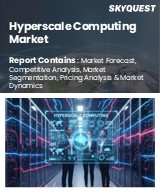
|
시장보고서
상품코드
1725005
Frost Radar : 라틴아메리카의 프라이빗 MEC(2025년)Frost Radar: Private Multi-Access Edge Computing in Latin America, 2025 |
||||||
주요 기업들을 자극하는 벤치마킹 시스템 - 새로운 거래의 흐름과 성장 파이프라인을 촉진하는 혁신
엣지 컴퓨팅은 지능, 데이터 처리, 분석, 통신 기능을 데이터 발생지인 네트워크 게이트웨이와 엔드포인트에 집중시킵니다. 그 목적은 대기 시간을 줄이고, 효율적인 네트워크, 운영, 서비스 제공 및 사용자 경험을 향상시키는 것입니다. 컴퓨팅을 데이터 소스에 가깝게 배치함으로써 엣지 컴퓨팅은 지연에 민감한 컴퓨팅을 가능하게 하고, 더 나은 제어와 빠른 통찰력을 통해 비즈니스 민첩성을 실현할 수 있습니다. 또한, 보다 효율적인 네트워크 대역폭을 지원하여 운영 비용을 절감할 수 있습니다.
프라이빗 MEC는 기업용 맞춤형 엣지 컴퓨팅 기능을 갖춘 프라이빗 모바일 네트워크를 구축하는 것입니다. 초저지연 수준(10밀리초 미만)을 제공함으로써 미션 크리티컬하고 지연에 민감한 용도를 실행하는 인프라를 구현합니다. 기업은 일반적으로 두 가지 모델 중 하나를 선택할 수 있는데, 하나는 하드웨어와 매크로셀 타워 및 MEC 설치 비용을 선불로 지불하고, 이후 제공되는 서비스에 대해 매월 저렴한 지속 비용을 지불하는 방식이고, 다른 하나는 선불 비용 없이 또는 최소한의 비용으로 모든 것을 서비스로 지불하는 방식입니다. 입니다. 일반적인 계약 기간은 3년에서 5년이지만, 제공업체에 따라 다를 수 있습니다. 게이트웨이, 소프트웨어 정의 광역 네트워크, 기타 애드온은 추가 요금이 부과될 수 있습니다.
업계 기업들은 전용 컴퓨팅 및 네트워킹 리소스를 고객의 사업장 내에 배치하고 있습니다. 이러한 접근 방식은 초저지연, 데이터 보안, 맞춤화를 우선시하는 산업 자동화, 스마트 팩토리 및 실시간 제어와 엄격한 데이터 프라이버시가 필요한 기타 용도에 이상적입니다. 이러한 차이는 제어, 보안, 지연 시간에서 중요한 차이로 이어집니다. 프라이빗 MEC는 데이터 및 용도에 대한 탁월한 제어, 물리적 분리를 통한 보안 강화, 실시간 운영을 위한 초저지연성을 제공합니다.
Frost & Sullivan은 업계 내 다수의 기업을 분석했습니다. Frost Radar(TM)는 전 세계 시스템 통합사업자 및 통신 사업자로 구성된 라틴아메리카의 서비스 제공업체를 벤치마킹합니다. 리더십 및 기타 우수성을 기반으로 추가 분석을 위해 선정된 기업들은 10가지 성장 및 혁신 기준에 대한 벤치마킹을 통해 Frost Radar(Frost Radar(TM)에서의 위치를 확인할 수 있습니다. 이 책에서는 Frost Radar(TM)에 등재된 각 기업의 강점과 그 강점에 가장 적합한 비즈니스 기회를 고려한 경쟁 프로파일을 제시합니다.
목차
전략적 필수 요건과 성장 환경
Frost Radar : 라틴아메리카의 프라이빗 MEC, 2025년
Frost Radar : 주요 기업
- Edge UOL
- Embratel
- Logicalis
- Telefonica Tech
- Tigo Business
베스트 프랙티스와 성장 기회
- 베스트 프랙티스
- 성장 기회
Frost Radar 분석
- Frost Radar : 향후 성장 가능성을 벤치마크, 2개 주요 지표, 10가지 분석, 1개 플랫폼
다음 단계 : Frost Radar를 활용하고, 주요 이해관계자에 힘을 준다.
- Frost Radar에 게재되는 의의
- Frost Radar는 CEO 성장 팀을 강화
- Frost Radar는 투자자를 강화
- Frost Radar는 고객을 강화
- Frost Radar는 이사회를 강화
다음 단계
면책사항
LSH 25.05.28A Benchmarking System to Spark Companies to Action - Innovation that Fuels New Deal Flow and Growth Pipelines
Edge computing pushes intelligence, data processing, analytics, and communication capabilities to where the data originates: at network gateways or endpoints. The aim is to reduce latency and ensure efficient networks, operations, and service delivery, and an improved user experience. By bringing computing closer to the data source, edge computing enables latency-sensitive computing and business agility through better control and faster insights. It also lowers operating expenses, resulting in more efficient network bandwidth support.
Private multi-access edge computing (MEC) is a private mobile network deployment with edge computing capabilities that is custom-built for enterprises. It enables an infrastructure that runs mission-critical and latency-sensitive applications by offering ultralow latency levels (less than 10 milliseconds). Enterprises usually have a choice of two models: either paying upfront for the hardware and the installation charges of the macro cell tower and MEC and then a lower monthly recurring charge for the services provided; or paying for everything as-a-service with no or minimal upfront costs. Typical contracts have a duration from three to five years, but this may vary by provider. There may be additional charges for gateways, software-defined wide area networks, and other add-ons.
Industry participants deploy dedicated computing and networking resources on a client's premises. This approach prioritizes ultralow latency, data security, and customization, ideal for industrial automation, smart factories, and other applications demanding real-time control and stringent data privacy. This distinction translates to key differences in control, security, and latency. Private MEC provides superior control over data and applications, heightened security because of physical isolation, and ultralow latency for real-time operations.
Frost & Sullivan analyzes numerous companies in an industry. This Frost Radar™ benchmarks service providers in Latin America, consisting of global system integrators and telecom operators. Those selected for further analysis based on their leadership or other distinctions are benchmarked across 10 Growth and Innovation criteria to reveal their position on the Frost Radar™. The publication presents competitive profiles of each company on the Frost Radar™ considering their strengths and the opportunities that best fit those strengths.
Table of Contents
Strategic Imperative and Growth Environment
Frost Radar: Private Multi-Access Edge Computing, Latin America, 2025
Frost Radar: Companies to Action
- Edge UOL
- Embratel
- Logicalis
- Telefonica Tech
- Tigo Business
Best Practices & Growth Opportunities
- Best Practices
- Growth Opportunities
Frost Radar Analytics
- Frost Radar: Benchmarking Future Growth Potential 2 Major Indices, 10 Analytical Ingredients, 1 Platform
Next Steps: Leveraging the Frost Radar to Empower Key Stakeholders
- Significance of Being on the Frost Radar
- Frost Radar Empowers the CEO's Growth Team
- Frost Radar Empowers Investors
- Frost Radar Empowers Customers
- Frost Radar Empowers the Board of Directors



















